Raspberry leaves turn red in June: why does this happen and what to do about it
Changing the color of raspberry leaves is a problem that every gardener has encountered sooner or later. In June, green leaves become covered with reddish, brown or red-violet spots, small dots or bubbles. There are several reasons for this phenomenon: phosphorus deficiency in the soil, the development of fungal diseases and the spread of insects. In this article we will tell you why raspberry leaves turn red in June, what to do with infected bushes and how to prevent the problem.
Why do raspberry leaves turn red?
The reasons for redness of raspberry leaves at the beginning of summer are associated with a deficiency of minerals in the soil, the spread of fungal infections and insect pests. The first symptoms appear in June - against the background of bright green foliage, red or violet-red leaves with dark and dry spots are visible.
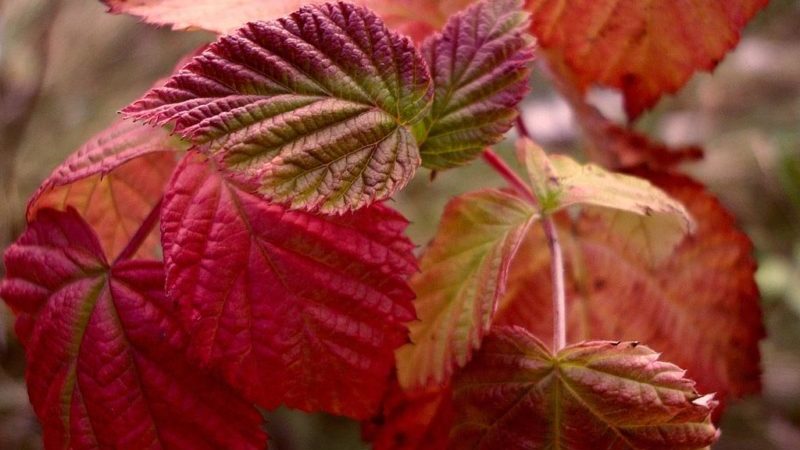
Lack of microelements
Phosphorus is the main element necessary for raspberries to fully grow and develop.. Its deficiency causes a delay in flowering and fruiting of the bush. Gardeners notice the first symptoms of phosphorus deficiency in the spring, during the appearance of buds. Plants deficient in this element set buds later than expected. The second sign of phosphorus deficiency is the falling of flowers and the simultaneous reddening of leaves. Gradually, all the foliage begins to dry out and become deformed.
Diseases
Fungal infections are one of the most common causes of red foliage. Against the background of high humidity and thickening of plantings, raspberry diseases such as:
- Anthracnose. Reddish specks appear on the leaves, gradually increasing in diameter.
- Septoria. The fungal disease first affects the lower leaves, which become covered with red spots, and gradually spreads to the entire bush. The affected foliage begins to dry out and fly off. Brown spots with a dark border appear on the leaves, and spots at the base appear on the shoots.
- Verticillium. A dangerous fungal disease that causes a 2-3-fold reduction in yield. The first signs of infection are dry leaves with dark red spots and cracking of the stems.
Pests
Insect pests are another reason for the redness of raspberry leaves and the death of the entire bush. Raspberries are most often attacked by the following pests:
- Gall midge. The pest resembles a small yellow mosquito, feeds on plant sap, and arrives in the area in June. Small red spots appear on the leaves. Without the timely intervention of a gardener, gall midge can destroy up to 80% of the shoots.
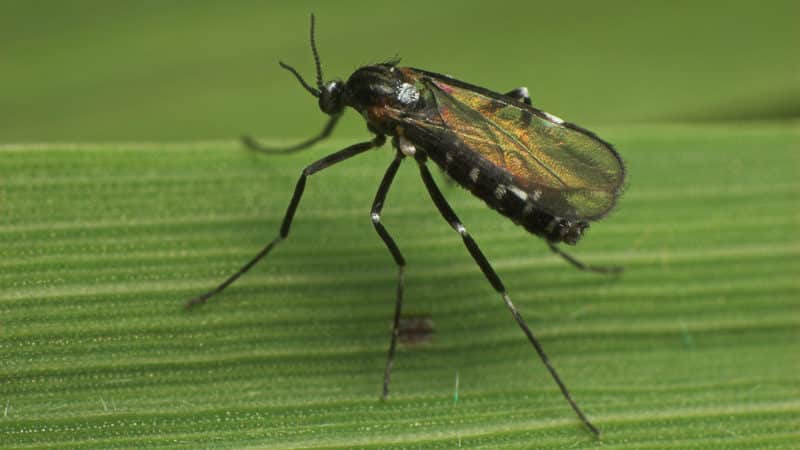 Gallica
Gallica - Nutcracker. Small bugs are voracious and feed on plant juices. Reddish bursting bubbles appear on the surface of the leaf blade, causing the leaves to dry out and crack.
- Aphid. A dangerous pest that attacks almost all garden and vegetable crops. It feeds on plant juices, first damaging young shoots and inflorescences, then spreading to the foliage. Colonies of green or black aphids settle on the back side of leaves and feel most comfortable in conditions of high humidity.
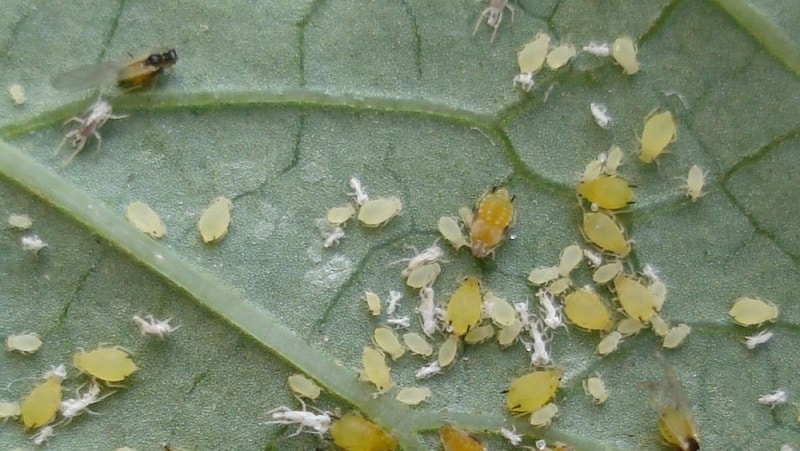
Causes of leaves turning red in June
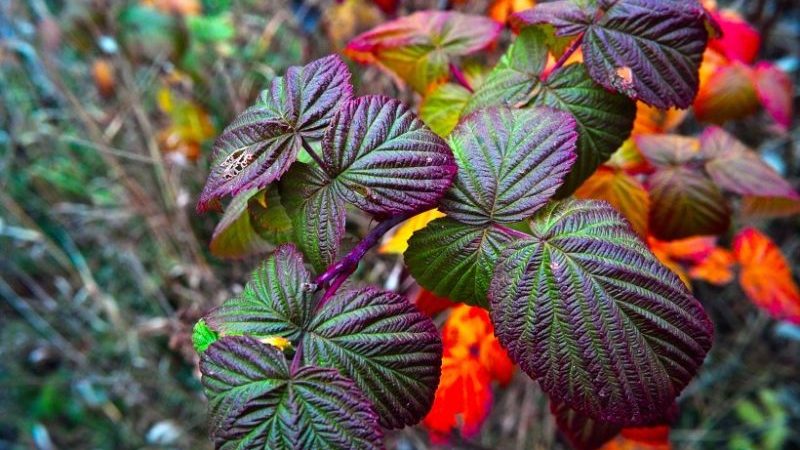
Redness of raspberry leaves develops not only due to improper care site, thickening of plantings, but also due to unfavorable weather conditions. Frequent and excessively heavy precipitation leads to the leaching of nutrients from the upper layers of the soil, as a result of which the root system does not receive enough potassium, phosphorus and nitrogen.
Stagnation of moisture in the root area is a dangerous condition that causes deterioration of aeration and partial or complete death of the plant. The downside of rainy weather is a long dry period, which disrupts the supply of nutrients to the root system.
What to do if raspberry leaves turn red
Depending on the cause of reddening of the leaves, gardeners select a method to solve the problem. The bushes are fed with nutritional components, pests are destroyed with the help of insecticides, and fungicides help cope with fungal spores.
Medications, depending on the cause of redness
If redness of the leaves is associated with phosphorus deficiency, raspberries are fed with phosphorus-containing fertilizers:
- double superphosphate (60 g per 1 sq. m);
- bone and phosphate meal (50-70 g per 1 sq. m);
- Bona Forte (2 tbsp per 10 l/1 sq. m during the season);
- "Agricola" (25 g per 10 l, consumption - 1.5-2 l per bush when sprayed every 14 days);
- “Zdraven” (15 g per 10 l/1 sq. m before flowering);
- “Gumi-Omi” (6 tbsp per 10 liters, per bush - 5 liters every 14 days).
To kill insects use:
- "Inta-Vir" (twice a week, frequency of treatment - 2-3 times);
- “Fitoverm” (three times a month);
- "Aktara" (one-time treatment is sufficient);
- "Karbofos" (75 g per 10 liters of warm water, frequency of treatment - three times every week);
- “Karate” (4 ml per 10 liters of water, twice a week).
A folk remedy based on tobacco shag (100 g per 1 liter of warm water) is highly effective.The mixture is infused for 24 hours, then boiled for 30 minutes, filtered through gauze and 40-50 g of laundry soap shavings are added. The bushes are sprayed 3-4 times every 10 days. Instead of shag, wood ash is often used (200 g per 10 l). Processing frequency is the same.
To treat fungal diseases use:
- Bordeaux mixture (3% solution before flowering, 1% during flowering and after harvest);
- “Zircon” (1 ml per 10 liters of water once during budding);
- “Fitosporin-M” (2 tsp per 10 liters of water 35 °C, treatment frequency - once every 10 days until the end of the season);
- "Acrobat MC" (20 g per 5 liters of water, frequency of treatment - once every two weeks, the last one - 30 days before harvest).
Garlic infusion is highly effective against fungal infections. To prepare you will need 300 g of chopped garlic cloves, 10 liters of warm water. The product is infused for 24 hours in a dark place, before use, 30-40 g of laundry soap shavings are added for better adhesion to the leaves. Treatment is carried out 3-5 times every 12-15 days.
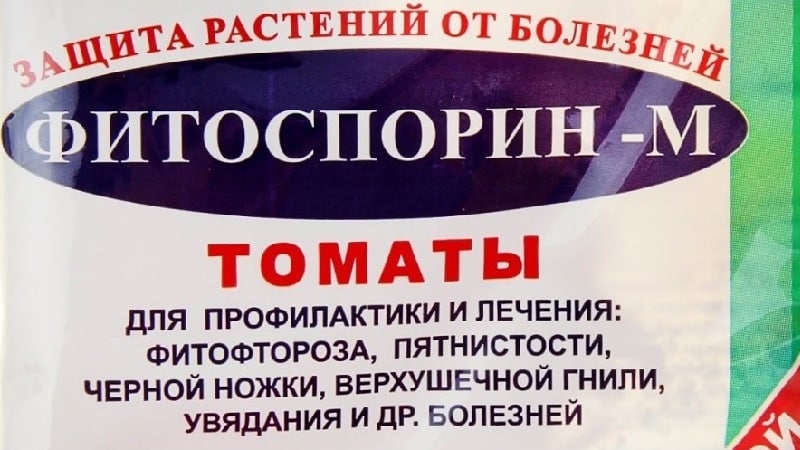
Agrotechnical techniques
Proper agricultural technology helps protect raspberries from diseases and pests:
- planting bushes at a distance of 60 m and maintaining a row spacing of 1.5 m;
- spring pruning of the central conductor to a height of 1.5 m;
- adding minerals fertilizing (in autumn - 2 buckets of peat with 100 g of urea per bush, in spring - 0.5 kg of manure with 5 g of urea);
- loosening the soil after watering, removing weeds;
- moderate watering in spring and summer, provided there is a shortage of seasonal rains;
- spring preventive treatment with “Fitosporin” against bacteria and fungi.
How to prevent the problem
Raspberry bushes get sick much less often if you protect the horse system from damage and regularly apply organic and mineral fertilizers 4-5 times a season.
Experienced gardeners recommend replanting raspberries once every 5-7 years, periodically carrying out sanitary pruning, mulching the tree trunk circle with hay, straw, peat, dry sheets and regularly updating the mulch layer.
Advice from experienced gardeners
Gardeners' recommendations will help maintain the health of the berry bush and prevent reddening of the foliage: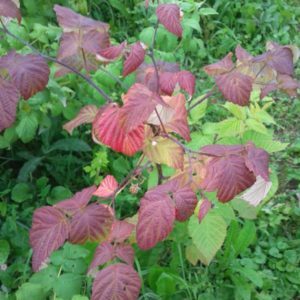
- Inspect the bushes once a week to promptly identify signs of infection by fungi or insects. In the early stages, dealing with the problem is much easier and cheaper.
- Do not ignore agricultural practices - weeding, loosening, moderate watering and fungicide treatment if you want to preserve the raspberries and reap a rich harvest every season.
- When using chemicals, do not forget about safety rules - wear protective gloves, goggles and a respirator. Prepare the working solution strictly according to the instructions, without exceeding the dosage and frequency of treatment.
- Plant mustard, marigolds, fragrant dill, and calendula next to raspberries to repel pests.
- After harvesting, feed the bushes with urea, bone meal, wood ashto increase the plant's defenses before wintering.
Conclusion
Red leaves on raspberries are the most common problem. Experts are confident that this is primarily due to a deficiency of mineral components in the soil, especially phosphorus. To replenish microelement reserves bushes are fed double superphosphate, bone and phosphate meal, complex fertilizers (Bona Forte, Agricola, Zdraven, Gumi-Omi).
The reasons for the redness of the leaves lie in the addition of fungal infections and the spread of insects. To destroy fungal spores, fungicides are used (Bordeaux mixture, Fitosporin-M, Acrobat, Zircon), and insecticides are used (Inta-Vir, Fitoverm, Aktara, Karbofos, Karate) ).
Agrotechnical techniques are highly effective: moderate watering, loosening, weeding, pruning, replanting every 5-7 years, fertilizing, preventive treatment with fungicides.